
We kindly inform you that, as long as the subject affiliation of our 300.000+ articles is in progress, you might get unsufficient or no results on your third level or second level search. In this case, please broaden your search criteria.

Herodotus can be counted among the most important ancient historians. Indeed, his Histories represent the main source for the Graeco–Persian wars. However, the reception of his work has undergone many changes since the time it was written. The following study deals with Herodotus’ reception in the time of the Renaissance. The author tries to answer and explain two basic questions that are narrowly connected with his name. The first problem relates to his veracity. The study addresses the question of how he was accepted by humanists — was he considered a faithful historian or a less trustworthy storyteller? The second problem relates to him as a pagan author being accepted by Christians. The author focuses on the mechanism which enabled this unusual combination.
More...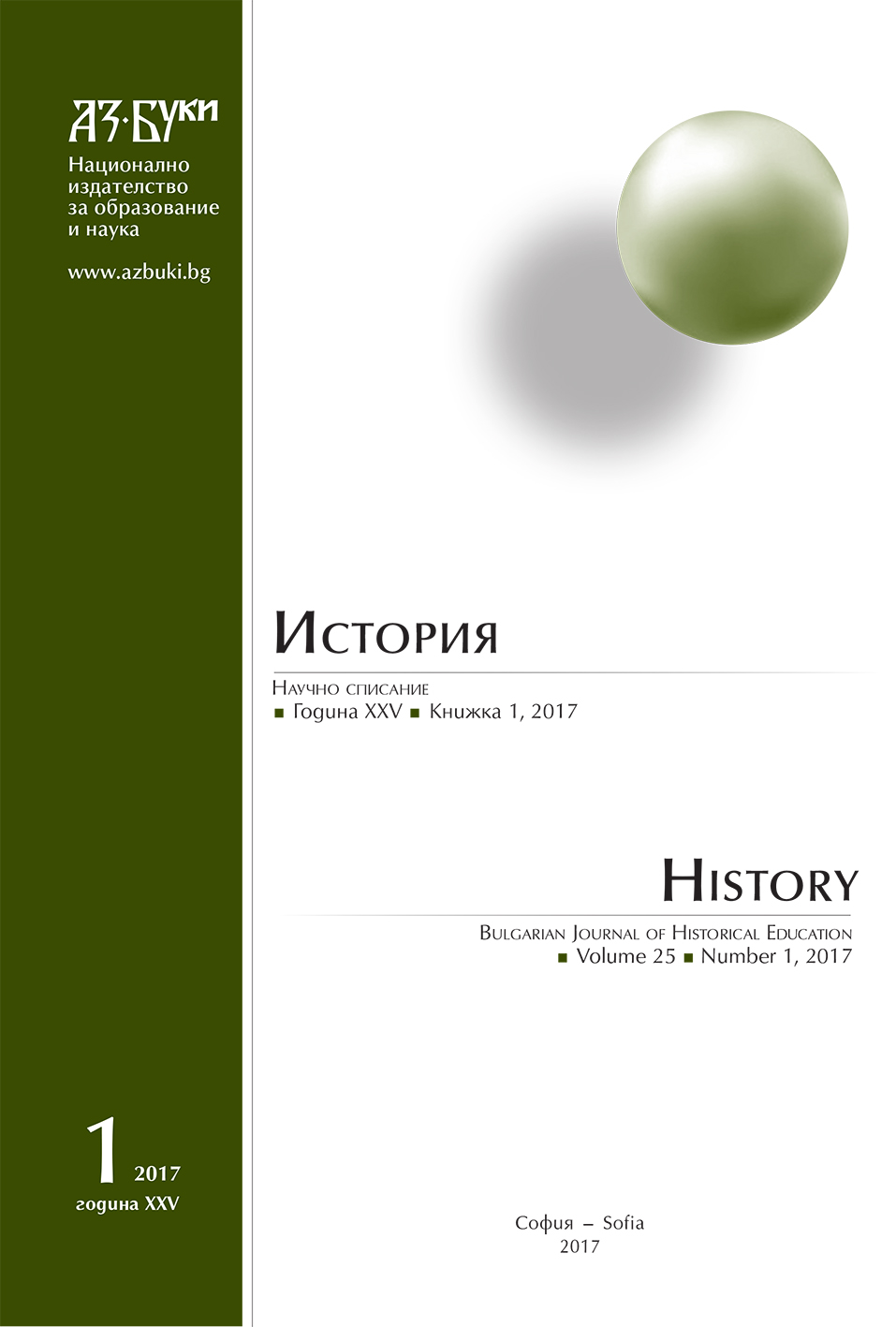

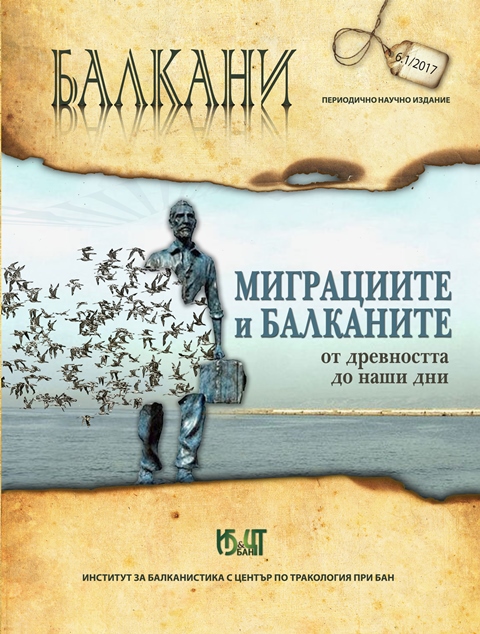
The kindness to the stranger is typical for all Mediterranean societies and as part of their cultures Christianity is no exception. The kindness of Christians however is somehow different. During 4th and 5th centuries the social influence of the Church and bishops significantly increased and started to affect all segments of roman society. Among the important social changes implemented during this period was the attitude towards strangers. Few bishops played an important role in this process – St Ambrose, St. Basil the Great and St. John Chrysostom. Some of their deeds – Basil’s Basileada and Chrysostom’s relations with Goths, and standings – Ambrose’s sermon against the expulsion of foreigners from Rome, started to change social perception of foreigners and implemented changes visible even today – the establishment of hospitals and hostels.
More...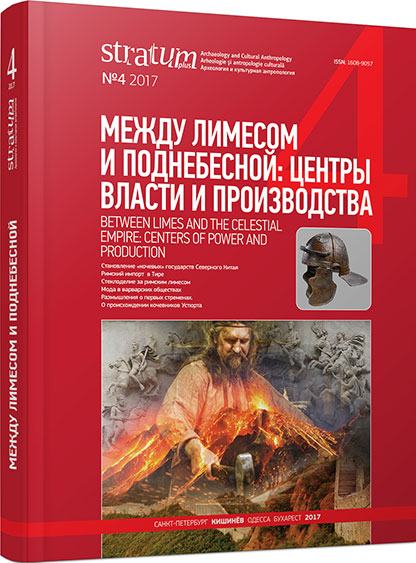
The article discusses possible ways of how La Tène (Celtic) traditions spread in the first century BC — first century AD, and analyses the phenomenon of so-called Celtic veil, revealed on materials of cultures of Central and Eastern Europe which experienced strong Celtic cultural influence. Most likely, both of these phenomena reflect traces of presence in the central and eastern parts of Barbaricum not only of the Celts, but also Celticized or «Celtoid» groups. One of the most important roles in both of these phenomena is playd by a usually small but quite mobile and socially privileged group — the elite. Its activities can be expressed in the control of important trade routes as the primary source of wealth and prestige, presence of a foreign or alien ruler among the elite — i.e. a prince (or a leader) through which “cultural patronage” could be exercised, presence of dynastic matrimonial ties. Fashion played a significant role in this environment, as a means to manifest one's privileged position and identify with a particular social group (elite). Craftsmen — as an important element of the privileged stratum of the barbaric society — also played an important role. Finally, we should mention other factors, such as the possibility of common cults and cult centers, as well as intertribal centers, the joint cross-tribal participation of barbarians in the wars, and, as a result, the formation of a common military supratribal culture.
More...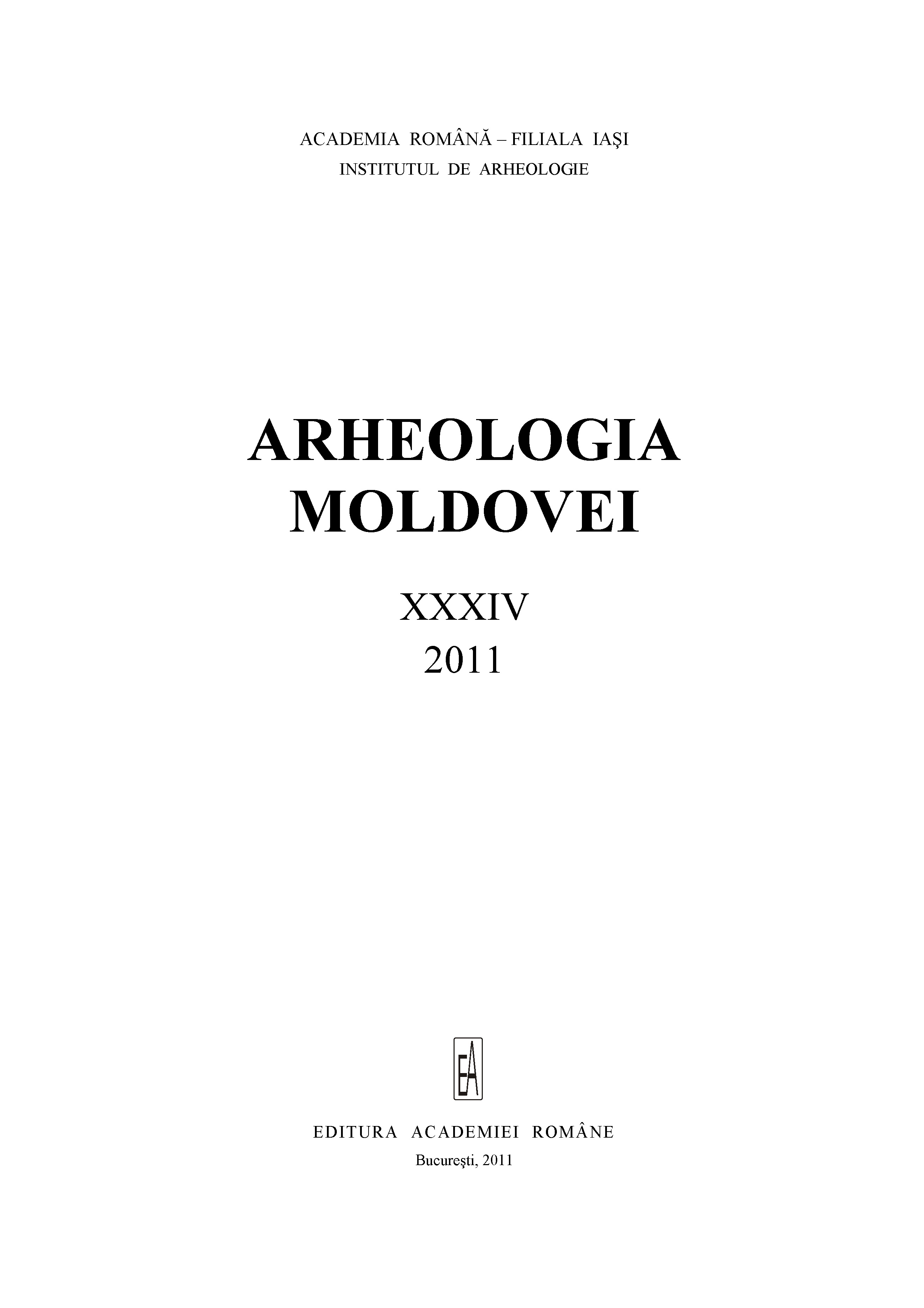
During the Iron Age Germanic tribes used mainly open air sanctuaries, such as holy groves or spring sanctuaries for sacrifice. This article describes such open air sanctuaries and their use by the worshippers according to the sources and reconstructed with the help of the archaeological evidence. Closer attention is paid to the complex practice of human sacrifice, which has attracted the attention of scholars since the 18th century.
More...
The archaeological site at Poiana (Nicoreşti commune, Galaţi county) was signaled out at the end of the 19th century (by Spiru Haret), and it was then explored archaeologically in 1913 (by Vasile Pârvan) and in 1926 (by Gheorghe Ştefan). Between 1927 and 1990, with some interruptions, intense investigations were undertaken there, under the leadership of Professor Radu Vulpe and of his wife, Dr. Ecaterina Dunăreanu-Vulpe, until 1982. Several other collaborators joined them in the course of time (Dr. Anton Niţu, Dr. Silvia Teodor, etc.); after R. Vulpe’s death (1982) the investigation of the archaeological site at Poiana (Nicoreşti commune, Galaţi county) was signaled out at the end of the 19th century (by Spiru Haret), and it was then explored archaeologically in 1913 (by Vasile Pârvan) and in 1926 (by Gheorghe Ştefan). Between 1927 and 1990, with some interruptions, intense investigations were undertaken there, under the leadership of Professor Radu Vulpe and of his wife, Dr. Ecaterina Dunăreanu-Vulpe, until 1982. Several other collaborators joined them in the course of time (Dr. Anton Niţu, Dr. Silvia Teodor, etc.); after R. Vulpe’s death (1982) the investigation of the site was led by Dr. Silvia Teodor, between 1985 and 1990.The site of Poiana is situated east of the Carpathian Mountains, on the lower course of the Siret, an important tributary of the Danube. Three vast habitation layers have been identified, corresponding to the Bronze Age (the cultures of Monteoru IC3 – IC2 and of Costişa, respectively), to the first Iron Age (Hallstatt, Basarabi culture) and, finally, to the second Iron Age (La Tène, Geto-Dacian culture).The richest layer which revealed the most representative vestiges is the one belonging to the Geto-Dacian culture (the middle of the 5th century B. C. – the middle of the 2nd century A. D.). Radu Vulpe identified the Geto-Dacian citadel at Poiana as ancient Piroboridava (Ptolemy). From a numismatic point of view, Poiana is also distinguished by the number and the variety of the coins found there. Radu Vulpe entrusted the studying of the coins of Poiana to the outstanding numismatist Bucur Mitrea, who recorded and studied all the monetary documentation, without publishing it totally. Although some data were used by Bucur Mitrea in his works, the complete catalogue of the coins found at Poiana still remained unpublished. Not long before his death (1995) professor Bucur Mitrea entrusted all his documentation about the coins from Poiana to Virgil Mihailescu-Bîrliba, whose duty was to publish it. Consequently, in the present study the list of the monetary finds from Poiana is presented (with some corrections and additions), accompanied by an incomplete commentary (referring only to the Greek issues). The Catalogue of coins includes five annexes: 1. The Catalogue of single finds from Poiana; 2. The monetary hoards found at Poiana; 3. The paramonetary objects found at Poiana; 4. Uncertain monetary finds from Poiana; 5. Monetary finds from around the Poiana site. The fact is pointed out that in no other Dacian fortress (with the possible exception of Sarmizegetusa) has such a large amount of coins been found: 1,269 coins in all, of which 929 have been studied by the author. Numerous monetary finds (11 single finds and 3 hoards containing 246 Roman republican and imperial denarii) have also been signaled out in the surroundings of the Poiana site. They were also studied by Bucur Mitrea. The Greek and Hellenistic single finds are represented by 15 coins: Histria 5, Callatis 3, Odessos 1, Panticapaion 1,Dyrrhachium 2, Thracian kings 3; a hoard containing bronze coins issued by Callatis (32) is also added to the items mentioned above. The coins from Histria are all of silver, and they could be dated to the 4th c. B. C. Their presence at Poiana is not surprising, because, as Bucur Mitrea remarked long ago, the Histrian silver coin is frequently signaled in the eastern area of the Carpathians (Moldavia). At the same time one could notice that some coins did not have any signs of wear, which proves that they had not circulated and had not been used in the exchange process between the natives and the Greek world. The analysis above supports the idea that, for the entire eastern Dacia, and especially for the area of the Lower Siret, at that time, the citadel at Poiana played an important political, religious, military and cultural role, besides the economic one. As we have already mentioned, coins issued by the Greek cities Callatis and Odessos have also been found at Poiana, although all the issues are of bronze and they appear not to have been used within the exchange process between the Geto-Dacians and the Greek merchants. Another important category of coins is represented by the local production. There have been recorded 27 Geto-Dacian issues, most of them belonging, chronologically, to a late stage (the types Adâncata – Mănăstirea, Inoteşti –Răcoasa and Vârteju – Bucureşti). But, certainly, the most numerous category of coins is repesented by the Roman republican issues, found at Poiana, both isolated (about 110), and in hoards (7). Although most of the Roman imperial coins are early ones, some of them, though doubtful, show a late stage of habitation (Domitianvs, Traianvs, Antoninvs Pivs, Marcvs Avrelivs, Elagabalvs and Tacitvs).The archaeological diggings have also proved the presence of one or more workshops for coin minting: there have been found two dies (one for Roman republican denarii and another one for Geto-Dacian issues), metal discs ready to be coined, as well as local coins and imitations of the Roman republican denarii. Although the numismatic-historical analysis of the monetary finds from Poiana has not been finished, we are convinced that the information published now can be used for a better and a more complete understanding of the role played by this citadel in the eastern part of Dacia.
More...
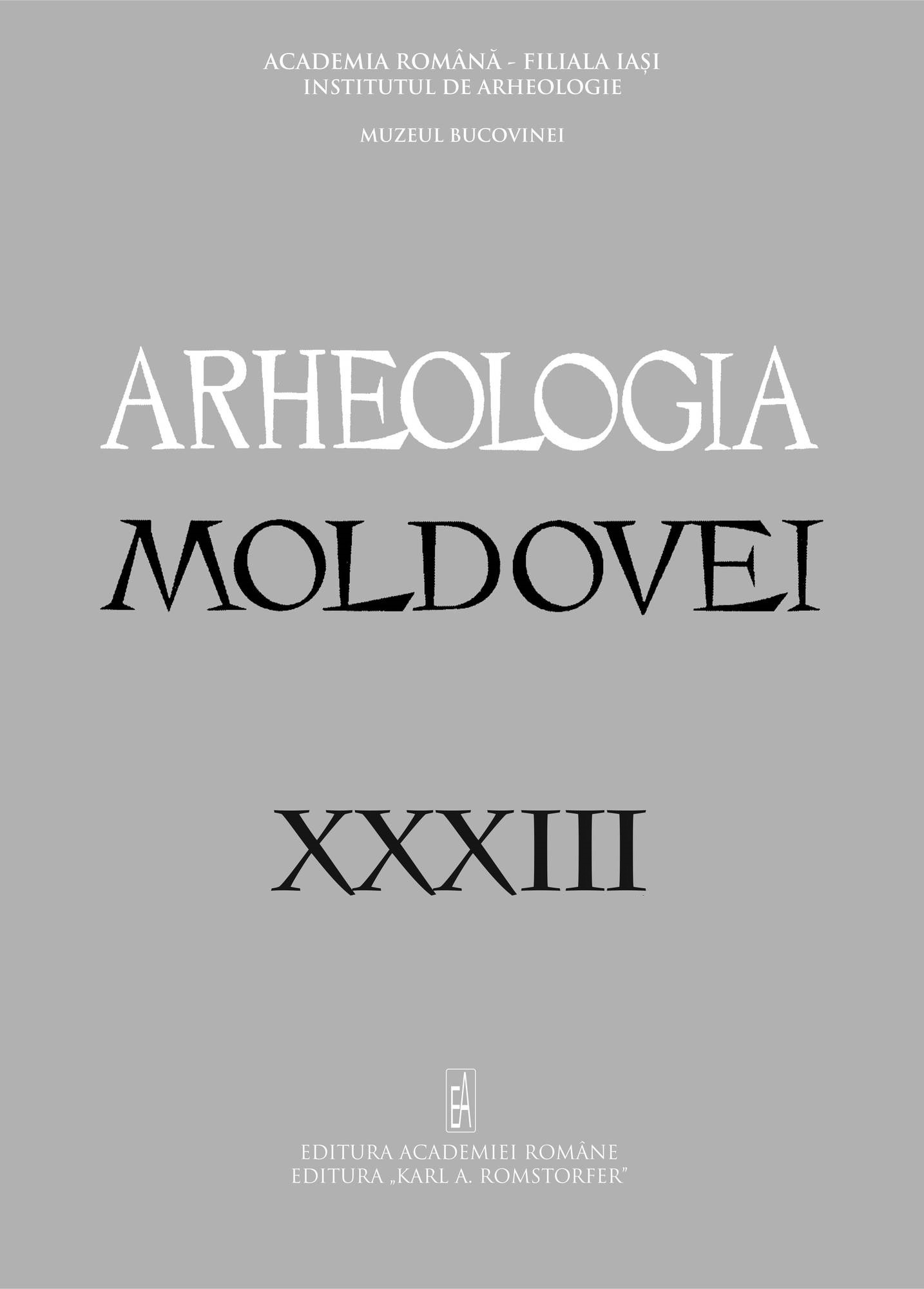
As a result of the archaeological research developed at the Roman settlement of Romula a fragment of a Roman pottery was discovered, which is nowadays preserved in the Museum of Caracal. Here the word ΓΑΔΑΤΗС was incised. D. Tudor considered it a Syrian anthroponym derived from the name of the god Gad, which lead to the formation of numerous Syro-Palmyrean anthroponyms. This opinion was shared by all those who, up to the time being, inserted this graffito in various epigraphic corpora of Dacia, considering it as further evidence of the Syrian presence in Roman Dacia. Yet, the supporters of such a viewpoint did not take into account all the available data which allows us to assert that Gadates is definitely an Iranian anthroponym attested on other sources as following: Xenophon’s Cyropaedia, The Letter of Darius to Gadatas, the Elamite Ka-da-da inscription discovered in the Persepolis fortifications, a Greek inscription from Delos and another Greek inscription from Antiphellos in Lycia pertaining to the Roman period. Xenophon’s Gadatas and the one mentioned in the Letter provide the Iranian character of the anthroponym. Within the Letter, Darius specifically name Gadatas ‘(his) slave’. We encounter this term in the Old Persian variant of the Behistun inscription as comprised in the collocation mana bandaka, meaning ‘my subject’ or ‘my servant’. It exclusively refers to the highest ranked Iranian individuals in the proximity of the Great King. Gadatas anthroponym is probably ahypochoristic derived from Bagadata, a very widespread name in the pre-Islamic Iranian world, having the same meaning with the Greek Theodotos and the Slavic Bogdan, i.e. ‘the Gift of God’. We do not know precisely where Gatates of Romula came from. He could belong to Syria as well, where the Iranian anthroponyms were natural, as the land had been subjected to the Iranian rule for more than two centuries.
More...
Die strategische Bedeutung der Meerengen verdeckt manchmal den Blick auf ökonomische und vor allem auf die fiskalischen Implikationen, die sich seit dem Altertum mit der Beherrschung der Meerengen ergeben. Selten wird die Thematik ganzheitlich betrachtet, so dass mithin in der Forschung der Eindruck entstanden ist, die Erhebung eines Durchgangszolls, der hin und wieder in den Quellen erwähnt wird, sei eine jeweils besonderen Umständen geschuldete eher ungewöhnliche Maßnahme. Die vorliegende Betrachtung beschränkt sich auf eine Periode, nämlich auf die byzantinische, genauer auf die frühbyzantinische Zeit. Die vorliegende Untersuchung untermauert die vom Verfasserbereits früher vorgetragene These (Klio 83, 2001; Historia 58, 2009), dass die fiskalische Ausbeutung der Meerengen in der gesamten Antike – und wie hier argumentiert wird auch in byzantinischer (und osmanischer) Zeit – die Regel und nicht die Ausnahme gewesen ist. Ein Sundzoll wurde, sofern es machtpolitisch irgendwie möglich war, fast immereingezogen, wobei die Athener zu Seebundszeiten den Anfang machten. Im Mittelpunkt der Betrachtungen steht ein inschriftlich überliefertes Dekret des Anastasios und eine Passage aus den Anekdota des Prokop, die über die Erhebungeines Durchgangszolls im 5. und 6. Jahrhundert berichten. Kursorisch wird die Erhebung des Sundzolls an Hellespontund Bosporos anhand von Quellenbeispielen bis zur Eroberung Konstantinopels durch die Türken weiter verfolgt.
More...
The author of this article resumes, with certain additions and reformulations, the statements expressed in an earlier paper (Poruciuc 1999, in English). The main idea of the article is that, by a minute analysis of the most probable etymological correspondents of the appellative on which Thracian – poris was based, one may discover correspondences not only in languages of the Indo-European family, but also in some that represent an “Egyptoid” connection, which may have something to do with the prehistoric macro-family of languages that many linguists now designate as “Nostratic”.
More...
A homage to professor Eugen Sava
More...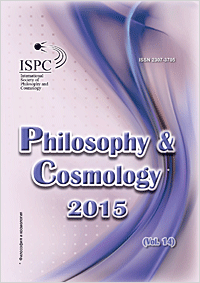
The author of the article, based on the onomastic analysis of ancient Greek, Roman and Celtic myths, consisting of taxonomically different implications of the etymological and genetic unity of the Indo-European languages, continues to justify the hypothesis (that was raised at first in his book “Karuo – Iberian secret”) about the existence and interaction of two (Western and of Eastern) ancient Iberian cultures which became the forerunner of the European cultural conglomerate formation.
More...
Review of: 1. Sopron – Atlas zur ungarischen Stadtgeschichte 1 – Hungarian Atlas of Historic Towns No. 1. Hrsg. von K. Szende. Sopron 2010. 87 Seiten, 39 Abbildungen, 43 Karten, 7 Ansichten. by: I. Holl 2. M. Egg–D. Kramer: Krieger, Feste, Totenopfer. Der letzte Hallstattfürst von Kleinklein in der Steiermark. Mosaiksteine. Forschungen am Römisch-Germanischen Zentralmuseum. Band 1. Verlag des Römisch-Germanischen Zentralmuseums Mainz 2005. by: K. Jankovits 3. L. F. Vagalinski: Blood and entertainments. Sports and gladiatorial games in Hellenistic and Roman Thrace. Sofia 2009, 228 pages with illustrations. by: Zs. Visy
More...
Review of: 1. GLENN PATTEN: PINDAR’S METAPHORS. A STUDY IN RHETORIC AND MEANING. (Bibliothek der klassischen Altertumswissenschaften. Hrsg. von Jürgen Paul Schwindt 2, 124) Universitätsverlag Winter, Heidelberg 2009. X + 275 o. by: Adorjáni Zsolt 2. J. ASSAËL: POUR UNE POÉTIQUE DE L’INSPIRATION, D’HOMÈRE À EURIPIDE . Éditions Peeters, Leuven 2006. (Collection d’Études Classiques vol. 21.), 307 o. by: Pataki Elvira 3. STOICI ROMANI MINORI (TESTI GRECI E LATINI A FRONTE). A cura di Ilaria Ramelli, Introduzione di Roberto Radice. Edizione Bompiani, Milano 2008. L + 2632 o. by: Takács László 4. MICHAEL C. J. PUTNAM: POETIC INTERPLAY: CATULLUS & HORACE. Princeton University Press, Princeton and Oxford 2006. X + 172 o. by: Takács László 5. GERHARD H. WALDHERR: NERO. ÉLETRAJZ. Fordította Kajtár Mária és Farkas Tünde. („Királyi házak”) Gabo kiadó, Budapest 2008. 334 o. by: Takács László 6. GESZTELYI TAMÁS – VARGA TERÉZ (szerk.): RÓMAI POLGÁROK ÉS URALKODÓK KÉPI ÜZENETEI. (Agatha XXII.) Debrecen 2007. 245 oldal, benne 61 színes és f.-f. tábla. by: Berczelly László 7. WALTER BAUER: ORTHODOXIE ET HÉRÉSIE AUX DÉBUTS DU CHRISTIANISME. Seconde édition revue et complétée par un Supplément de Georg Strecker . Traduction par Philippe Vuagnat, révisée et complétée par Christina et Simon C. Mimouni . Préface d’Alain Le Boulluec. (Patrimoines. Christianisme) Les Éditions du Cerf, Paris 2009. 348 o. by: Jakab Attila 8. ENRICO NORELLI: MARIE DES APOCRYPHES. ENQUÊTE SUR LA MÈRE DE JÉSUS DANS LE CHRISTIANISME ANTIQUE. (Christianismes antiques) Labor et Fides, Genève 2009. 178 o. by: Jakab Attila 9. F. GRAF: APOLLON. GODS AND HEROES OF THE ANCIENT WORLD. Routledge , London/New York 2009. XVIII + 190 oldal mutatókkal. by: Pataki Elvira 10. BANGHA, I. – MÉSZÁROS, T. (edd.): A DANUBIO AD USQUE GANGEN. KLASSZIKA-FILOLÓGIAI, INDOLÓGIAI ÉS MAGYAR KULTÚRTÖRTÉNETI TANULMÁNYOK A 80 ÉVES VEKERDI JÓZSEF KÖSZÖNTÉSÉRE. Typotex, Budapest 2009. 265 o. by: Adorjáni Zsolt
More...
Review of: 1. DIEUX, HÉROS ET MÉDECINS GRECS. HOMMAGE À F. ROBERT. Ed. M. Woronoff , S. Follet, J. Jouanna. Presses Universitaires Franc-Comtoises 2001. 225 oldal F. Robert műveinek bibliográfiájával. by: Pataki Elvira 2. PHOEBE GIANNISI: RÉCITS DES VOIS. CHANT ET CHEMINEMENT EN GRÈCE ARCHAÏQUE. Coll. Horos, Ed. Jérôme Millon. Grenoble 2006. 190 o. + bibliográfia, 40 fekete-fehér fotóval. by: Pataki Elvira 3. MARCUS FABIUS QUINTILIANUS: Szónoklattan. Fordította és a jegyzeteket összeállította: Adamik Tamás et al. Pozsony 2008. 859 l. by: Könczöl Miklós 4. HISTOIRE DE LA LITTÉRATURE GRECQUE CHRÉTIENNE. Sous la direction de Bernard Pouderon . Vol. I: Introduction. Sous la responsabilité de Enrico Norelli et Bernard Pouderon. (Initiations aux Pères de l’Église) Les Éditions du Cerf, Paris 2008. 333 l. by: Jakab Attila 5. A LEX IRNITANA (EGY FLAVIUS-KORI MUNICIPIUM TÖRVÉNYE). Fordította, a bevezetést és a jegyzeteket írta Illés Imre Áron. Szeged 2007. (Documenta Historica 77.) 75 l. by: Könczöl Miklós 6. SZÉKELY MELINDA: KERESKEDELEM RÓMA ÉS INDIA KÖZÖTT. Szegedi Egyetemi Kiadó, 2008. 179 oldal, f-f illusztrációk. by: Gesztelyi Tamás 7. GUARINO VERONESE LATIN NYELVTANA (REGULAE). Kiadta Vadász Géza. Alba Civitas Történeti Alapítvány, Székesfehérvár 2007. 172 l. by: Ötvös Zsuzsanna
More...
The present study points out that a passage in the exegetic work of Saint Gerard, bishop of Csanád (Hungary) (Gerardi Moresenae aecclesiae seu Csanadiensis episcopi Deliberatio supra hymnum trium puerorum, Bayerische Staatsbibliothek München, Clm 6211, 123v —124r , ed. Gabriel Silagi, in CCCM 29, 1978, lib. VII, 971—994) is partly a word by word quotation, and is partly a paraphrase from Tractatus sive homiliae in psalmos of Saint Jerome (S. Hieronymi presbyteri Tractatus sive homiliae in psalmos, in Marci evangelium aliaque varia argumenta, ed. D. Germanus Morin, CCSL 78., 1958, p. 281). It was formerly thought by several medievalists, based on this locus, that the author, on writing about Manichaeans and “Greeks”, might have alluded to the Bogumilism as a contemporary heresy in the Balkan. (Moreover, the entire work is considered an anti-heretical tractate, by the interpretation of this and similar loci.) Since the passage is a mere quotation of an antic text, it cannot be a proof of the spreading of Bogumilism in Hungary in the 11th century. Finally, Saint Gerard’s additions referring to his own age do not mean that he applies Jerome’s text concretely to a certain heresy, but they warn the reader only to the incessantly present danger of heretical thinking. (This was at that time, in the early Christian Hungary, the actual threat of relapse to paganism.)
More...
Review of: 1. ANNEO CORNUTO: COMPENDIO DI TEOLOGIA GRECA. (TESTO GRECO A FRONTE.) Saggio introduttivo e integrativo, traduzione e apparati di Ilaria Ramelli. Milano 2003. 608 l. by: Takács László 2. COMMENTUM CORNUTI IN PERSIUM. Recognoverunt et adnotatione critica instruxerunt W. V. Clausen et J. E. G. Zetzel. Monachii et Lipsiae in aedibus K. G. Saur, Bibliotheca Scriptorum Graecorum et Romanorum Teubneriana MMIV. 202 l. by: Takács László 3. DAVID NOY—ALEXANDER PANAYOTOV—HANSWULF BLOEDHORN: INSCRIPTIONES JUDAICAE ORIENTIS. VOL. I. EASTERN EUROPE. (Texts and Studies in Ancient Judaism 101.) Tübingen, Mohr Siebeck 2004. 397 l. by: Grüll Tibor 4. WALTER AMELING: INSCRIPTIONES JUDAICAE ORIENTIS. BD. II. KLEINASIEN. (TSAJ 99.) Tübingen, Mohr Siebeck 2004. 650 l. by: Grüll Tibor 5. DAVID NOY—HANSWULF BLOEDHORN: INSCRIPTIONES JUDAICAE ORIENTIS. VOL. III. SYRIA UND CYPRUS. (TSAJ 102.) Tübingen, Mohr Siebeck 2004. 284 l. by: Grüll Tibor 6. EDWARD CHAMPLIN: NERO. The Belknap Press of Harvard University Press, Cambridge (Massachusetts) — London (England) 2003. 346 l. by: Takács László 7. PESTHY MONIKA: A CSÁBÍTÁS TEOLÓGIÁJA. A kísértés fogalmának története az ókorban. Kairosz Kiadó, Budapest 2005. 446 l. by: Adamik Tamás 8. SZAKRÁLIS KÉPZŐMŰVÉSZET A KERESZTÉNY ÓKORBAN I—II. Összeállította, fordította, a jegyzeteket és a bevezető tanulmányt írta BUGÁR M. ISTVÁN. Catena, a Pécsi Tudományegyetem Patrisztika Központja, a Paulus Hungarus és a Kairosz Kiadó közös sorozata. Budapest 2004. 286+212 l. by: Kiss Erzsébet
More...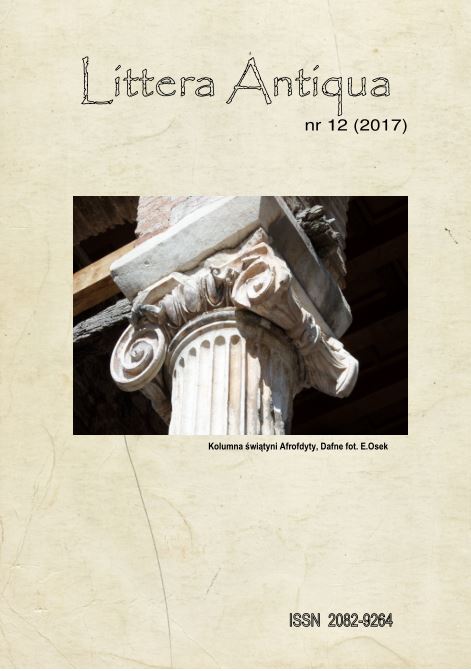
The paper is a review of the ancient reports and moderns opinions on locating the oracle of Trophonius at Lebadeia (modern Livadeia), Boeotia, which had been operating between the 6th century B.C. and the 3rd century A.D. It presents argumentation for locating the Trophonion at the Castro hill, in the very place where nowadays there is a two-level church: the Agia Sophia chapel joined with the crypt of Santa Barbara. The text is accompanied by maps, pictures illustrating the particular places, and a corpus of ancient sources concerning Trophonius and his oracle.
More...